Disclosure: This post may contain affiliate links. I earn a small commission when you click a link and make a purchase. Thanks for supporting SewingSociety.com!
Are you overwhelmed in your search to buy a new sewing machine? There are hundreds of options out there! It’s hard to know what features to look for and where to find a good deal.
I bought a new sewing machine last year, so I understand the overwhelm. I spent countless house researching brands and models. That’s why I decided to write this buyer’s guide on what to look for in a sewing machine.
In this post, I hope to walk you through everything you need to know about buying a sewing machine, whether you’re a complete beginner or you’ve been sewing for years and you’re ready for an upgrade.
Disclosure: This post contains affiliate links. I earn a small commission when you click a link and make a purchase. Thanks for supporting SewingSociety.com!
Contents
What type of sewing machine should I buy?
There are two main types of sewing machines — mechanical and computerized. In general, computerized sewing machines are more expensive but they have a lot more functionality than mechanical ones.
I’ve sewn on both types of sewing machines. I prefer computerized. However, you’ll definitely find people out there who would never buy anything but a mechanical machine. One type isn’t necessarily better than the other; it’s more a matter of preference. The one that is better for you depends on what features you are looking for in a sewing machine.
Mechanical Sewing Machines
Mechanical sewing machines have basic functionality with knobs that you adjust for stitch width and length. They are the easiest to use. However, mechanical sewing machines lack the functionality of modern, computerized sewing machines. For example, you can’t program a mechanical sewing machine to stop with the needle in the down position, customize stitch patterns, or cut your thread with the push of a button.
The advantage to mechanical sewing machines is that they are often made of metal parts, making them heavy and durable. They also have a lot less that can go wrong with them to need repairs.
Vintage sewing machines are mechanical. However, there are a few modern mechanical sewing machines on the market, too, such as the Janome HD1000.
If you only want a sewing machine with basic functionality and none of the modern, fancy features, a mechanical sewing machine could work well for you.
Computerized Sewing Machines
Computerized sewing machines tend to be smoother, quieter, and have more functionality than mechanical sewing machines. You adjust stitch length and width with buttons. However, computerized sewing machines have a steeper learning curve because there are more buttons to figure out.
Most computerized sewing machines have a top-loading bobbin where you can see how much thread you have left while most mechanical sewing machines have a front-loading bobbin where you have to remove the bobbin case to insert your bobbin. This isn’t always the case, but drop-in bobbins are easier to use.
A computerized sewing machine is the best option for most people because it offers so much versatility and convenience. I always say, “The technology is there, so why not use it?”
Other Types of Sewing Machines
If you already own a sewing machine and are just looking to upgrade, consider buying a serger, a cover stitch machine, or even an embroidery machine instead. This will expand the types of things you can sew. It might be a better use of money than simply upgrading to a different sewing machine. After all, All you really need a sewing machine to do is sew in a straight line and sew a zigzag.
Read: What’s the Difference Between a Sewing Machine and a Serger?
A serger was one of the best things I ever bought for my sewing room. I got the Brother 1034D. It is an entry-level serger, but it makes sewing faster and I love the overlocked seams. It was definitely a good buy.
How much does a good sewing machine cost?
Sewing machines come in a wide range of prices. You can find a basic sewing machine new for around $200. However, you can also find sewing machines that cost upwards of $15,000. The most important thing to remember is that you get what you pay for. A cheap, plastic sewing machine is not going to last as long, or give you the same results, as a high-end machine.
If you can budget between $1,000 and $2,000 for a sewing machine, I think you’ll be very happy with what you can find.
I currently use the Bernette b79. It cost me about $2,000. I think it is a good, high-quality sewing machines with all the features I will ever need or want. I don’t plan on buying anything more expensive in the future. If you want to learn more about it, head over to my review of the Bernette b79.
If money is no obstacle to you, you might as well go to a sewing machine dealer and buy a $15,000 sewing/embroidery machine combo from Bernina. I personally think that is the best money can buy…
Sewing machines can be a pricey investment. Buy the best you can afford, but always remember to compare the cost with the features. For example, if you want an inexpensive sewing machine, but you’re also interested in trying machine embroidery, you could get the Brother SE600. It is a nice beginner sewing machine, but it also has a small embroidery unit with a 4”x4” hoop.
A note on buying used…
If you’re thinking about buying a used sewing machine to save money, that can be a good option if you’re careful. When you buy a used sewing machine, you’ll want to get it cleaned and serviced before you use it. However, if it needs repairs, you might be better off buying new.
Read: How to Know If Repairing Your Sewing Machine Is Worth the Cost.
When you’re buying a used sewing machine, you also want to make sure it comes with all the original presser feet and accessories, as well as the user manual. Otherwise, you might end up spending more money in the end to get everything you need.
Also, ask around to make sure you are getting a good price. You can always make a post in Sewing Society’s Facebook page if you want advice on whether to buy a specific sewing machine or not. I’d be happy to give my opinion, as well as others in the group.
What sewing machine brand should I buy for quality?
The best sewing machine brand is definitely up for debate. Some people are very loyal to certain brands. A quick online search will give you lots of opinions on the best one.
I have another post on this site where I’m running a public opinion poll on the best sewing machine brand. If you have a preference, please come vote! The options are Baby Lock, Bernina, Brother, Elna EverSewn, Husqvarna Viking, Jaguar, Janome, Juki, Necchi, Pfaff, Singer, Toyota, and White.
I have owned several sewing machines. Out of all the machines I have tried, Bernina is my favorite brand for quality. Read: My Sewing Machine Journey. I’ve noticed people lean towards Brother sewing machines for beginners and Bernina sewing machines for quality.
Before buying a sewing machine, you should always check online reviews. This is the best way to get a feel for whether you’re getting a good brand or not.
A note on quality…
Sewing machines with plastic frames are more affordable, but they are not as durable and parts can break off easily. If you plan to move your sewing machine around a lot, durability is important and you should look for a sewing machine with a metal frame and parts.
Weight is often associated with quality, but I don’t think that’s always the case. If you plan to set up your sewing machine in one place and never move it, weight doesn’t really matter. Just keep in mind that if you don’t have a dedicated sewing room, you might want to get a portable sewing machine that isn’t a big pain to move around.
I do suggest you avoid the mini sewing machines. Yes, they are more portable, but they aren’t good for sewing anything besides cotton. They also lack a lot of features that make sewing easier.
What built-in stitches are important on a sewing machine?
Sewing machines can come with as few as 5 stitches or as many as 300. However, you really only need a straight stitch and a zigzag stitch. Those are the stitches you’ll be using most often. Don’t be allured into paying more for a sewing machine simply because of the number of built-in stitches.
It’s fun to have some decorative stitches for topstitching, but I honestly haven’t touched half of the stitches that came on my sewing machine.
Here are the built-in stitches to look for on a sewing machine:
- Straight Stitch: Ideally, you want a straight stitch that is adjustable from 0-7mm. Most of the time you’ll use a 2.5mm stitch length, but the 7mm is good for basting and the 0mm is nice for locking stitches. You can find some sewing machines with a stitch length as long as 9mm.
- Zig-Zag Stitch: You want a zig-zag stitch that is adjustable in both width and length. It’s also nice if you can find a sewing machine that is compatible with a twin needle.
- Buttonhole Stitch: If your sewing machine has a zig-zag stitch, your user manual should include instructions on how to create a buttonhole. However, try to find a sewing machine with an automatic buttonhole stitch and buttonhole foot. You will be able to put your button in the presser foot to set the size and then press a button to create the buttonhole for you. This saves you so much time and headache!
- Stretch Stitch: A zig-zag stitch works for most knit fabrics, but a stretch stitch (lighting bolt) is also useful to have on your sewing machine. It allows your fabric to stretch after you’ve sewn a seam. The triple stitch also creates the same effect.
- Blind Hem Stitch: To create an almost invisible hem on pants and skirts, you’ll want a blind hem stitch. It is a combination of the straight stitch and zig-zag stitch.
My favorite stitch on my sewing machine (Bernette b79) is the lockstitch. It literally ties a knot in your thread so you don’t have to backstitch. How cool is that?
What features should I look for on a sewing machine?
As I mentioned earlier, all you really need on a sewing machine is a straight stitch and a zig-zag stitch — everything else is just extra. However, that doesn’t mean there aren’t other features you should look for in a sewing machine for convenience and fun.
When deciding what to look for in a sewing machine, write down everything that you want to be able to sew. This will help you choose the features you actually need and not pay more for features you’ll never use.
Remember to consider your short and long-term objectives. Your first sewing machine doesn’t need to have every imaginable feature, but there are some things you might want as you continue your sewing journey.
Here are some nice features to get on a sewing machine:
- Adjustable Speed Control: Instead of controlling your speed with the foot pedal, some sewing machines have an adjustable control and can even sew without a foot pedal. This is nice for things like free-motion quilting.
- Automatic Needle Threader: Some sewing machines have either an automatic needle threader or a semi-automatic needle threader. This is a nice feature because it makes changing thread colors quick and easy. If you don’t have this feature on your sewing machine, make sure you get a needle threader tool.
- Needle Up/Down Position: With this feature, you can choose where your needle stops when you release the foot control. This makes pivoting and sewing curves faster. You also don’t have to use your sewing machine’s handwheel as often.
- Needle Position Adjustment: This button allows you to move your needle bar left or right to fine-tune where you want your stitches created. It makes top stitching and inserting zippers easier.
- Automatic Thread Cutter: Some sewing machines have a button you can press to cut your thread for you. This is nice because it saves you thread and the hassle of cutting after every seam.
- Knee Lift: A knee lift allows you to lift your presser foot hands free. It is nice when quilting or trying to sew around curves.
- Feed Dog Release: For free-motion quilting, you want a sewing machine that allows you to disengage the feed dogs so they don’t interfere when you are moving your fabric.
- Free Arm: Most sewing machines have a detachable free arm that lets you easily sew sleeve cuffs and other small area. This is important if you plan to sew clothes.
- Large Throat Width: If you plan to do a lot of quilting, getting a sewing machine with a lot of space under the arm is crucial.
- Built-in Walking Foot: A walking foot is a presser foot attachment that feeds fabric through your sewing machine from the top. It is very useful when sewing stretchy or bulky fabrics. Some sewing machines have a built-in walking foot you can easily engage when needed.
- Embroidery Unit: Sewing/embroidery machines combos are becoming more popular because they allow you to monogram or add fun embroidery designs to your sewing projects. Some sewing machines come with an embroidery unit so you no longer need a separate machine for this. One example is the Brother SE1900.
A note on heavy duty…
Sometimes sewing machines are labeled as “heavy-duty.” Don’t be fooled into thinking you can’t sew thick fabric unless you get a heavy-duty machine. The thickness of the fabric you can sew has more to do with your needle than your machine. However, I would avoid the mini sewing machines because they simply don’t have the versatility of a standard sewing machine.
What extra accessories and presser feet do I need?
Most sewing machines come with a few different presser feet — typically the zig-zag foot, a zipper foot, and buttonhole foot. Some come with a lot more… It’s nice to have lots of presser feet for different types of projects. If you can find a sewing machine that comes with several presser feet, you’ll save money in the end because you won’t have to buy them separately.
Some specialty presser feet you’ll want to get include a rolled hem foot, Teflon foot, and walking foot. Some of these presser feet cost as much as $50, so the more you can get included in your sewing machine, the better.
I’ve found that most sewing machine feet are interchangeable from machine to machine. I am using the same presser feet that came on my Brother SE400 sewing machine for my new Bernette b79. As long as you get a “low-shank” sewing machine, this should be the case for you, too.
If possible, you should also try to get a sewing machine that comes with an extension table. This is something that expands the flat surface of your machine where you feed your fabric. It helps you keep your seams straight and manage your fabric better. This is not a must, but a nice bonus if you can find it. At some point you may want to buy a sewing cabinet with a custom insert for your machine to extend your sewing surface further. Check out the Arrow Gidget II sewing table to see what I mean.
Where do I buy a sewing machine?
One good place to buy sewing machines online is SewingMachinesPlus.com. They sometimes discount sewing machines by as much as 70%. I’ve made purchases from this store before and I’ve been very pleased. Their prices are sometimes lower than sewing machines on Amazon, so be sure to check both places once you pick the model you want.
If you’re looking to buy a high-end sewing machine, consider going to a sewing machine dealer to try several models out in person. You might find you like the look and feel of one over another. Another advantage to buying from a sewing machine dealer is that they sometimes offer free classes. Just remember that you’ll have to pay a premium at these stores.
No matter where you purchase your sewing machine, make sure that you get a warranty. If you purchase a sewing machine through Amazon, you can typically pay an additional fee to buy an extended warranty. Amazon will replace or fix your sewing machine for the duration of your warranty. A warranty is important because you’re more likely to break your sewing machine or encounter a problem as a beginner. There’s a learning curve to using a sewing machine.
I do suggest you avoid buying a sewing machine from a chain store. Personally, I avoid sewing machine dealers. I feel like they are always try to upsell you. Sure, they can provide a lot of education and you’re able to get a feel for a sewing machine before you buy it, but I think it’s a bad idea to get all your information from one person or place.
You can save money by purchasing a sewing machine online because you can easily compare the price at several retailers and look for deals.
What is the best sewing machine?
I hope this post has helped you learn what to look for in a sewing machine. There’s a lot to consider!
After doing tons of research, here are my top picks:
- Best All Around Sewing Machine: Bernette b79
- Best Sewing Machine for Beginners: Brother CS6000i
- Best Sewing Machine for Quilters: Janome MC6650
- Best Heavy Duty Sewing Machine: Janome HD3000
- Best Budget-Friendly: Brother MX60
- Best Portable Sewing Machine: Brother Intl LX3817
- Best Sewing Machine for Kids: Singer M2100
If you’re a complete beginner and need some extra help choosing a sewing machine, head over to this post: What Is the Best Sewing Machine for Beginners? I’ve hand selected three inexpensive sewing machines that will set you up for success. Good luck!
Share this post on Pinterest!

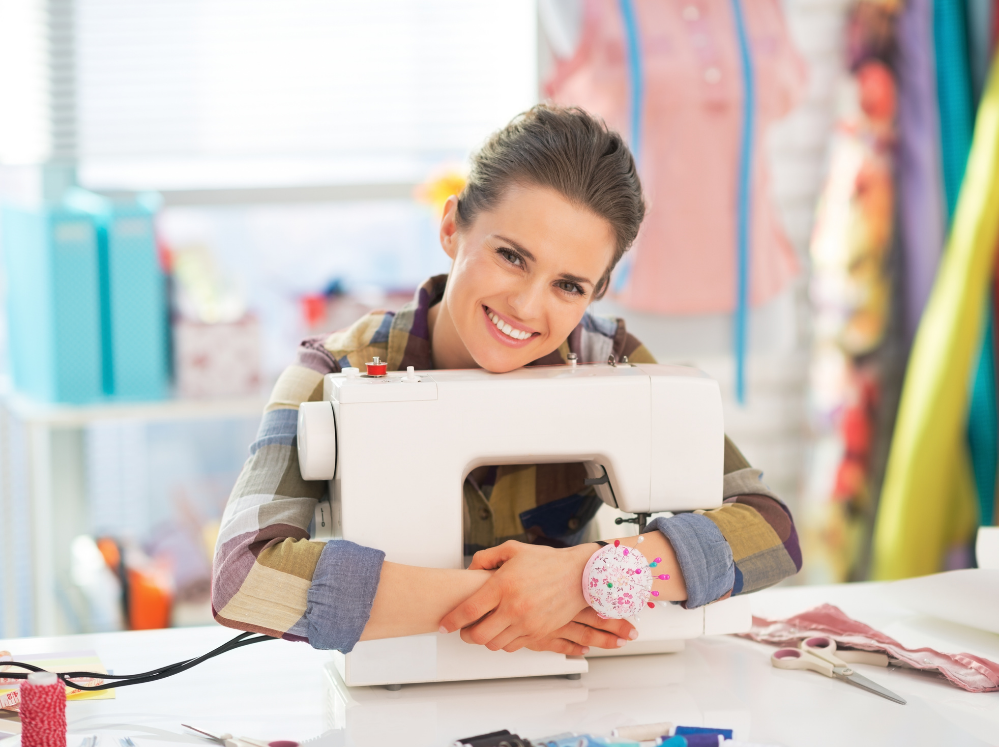
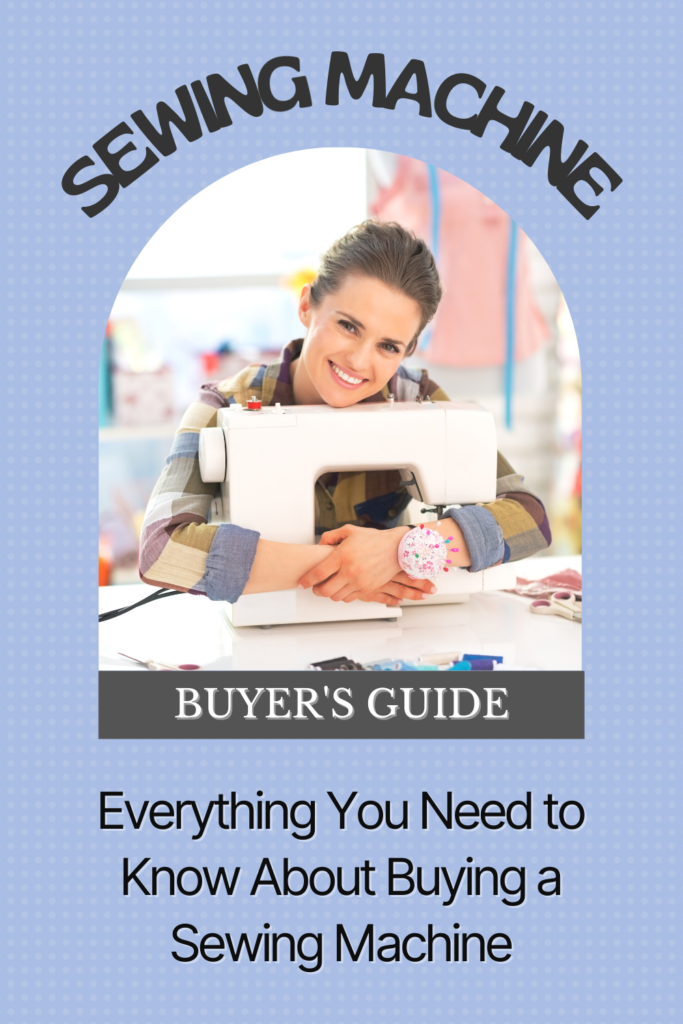
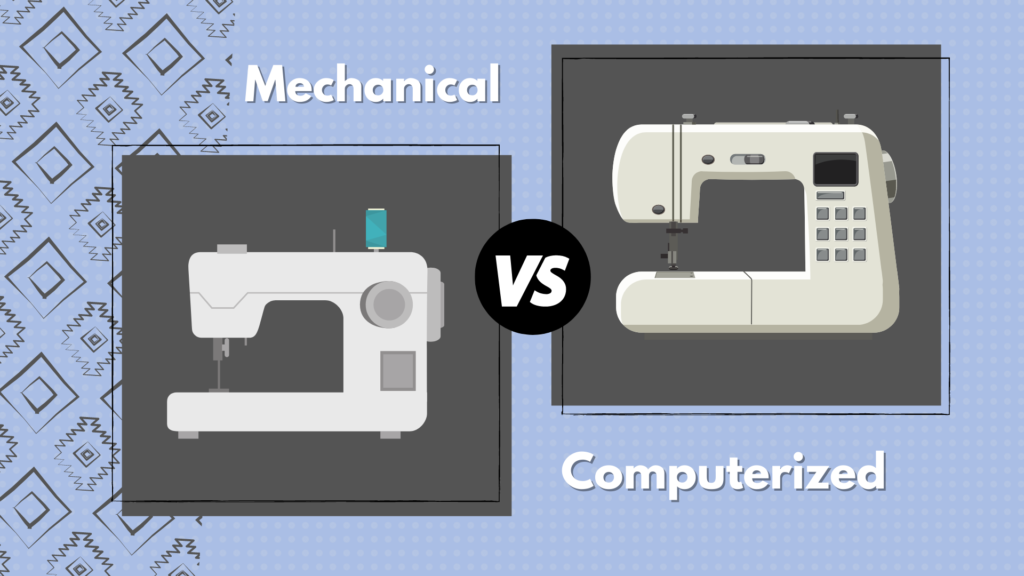
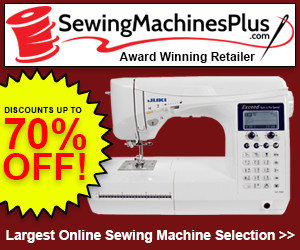
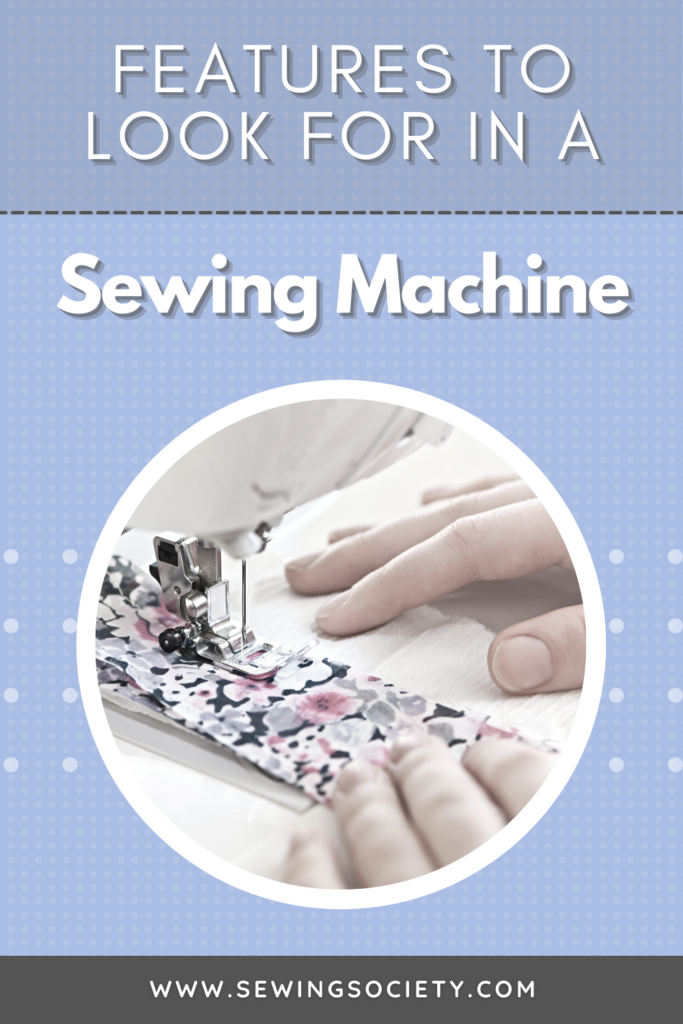
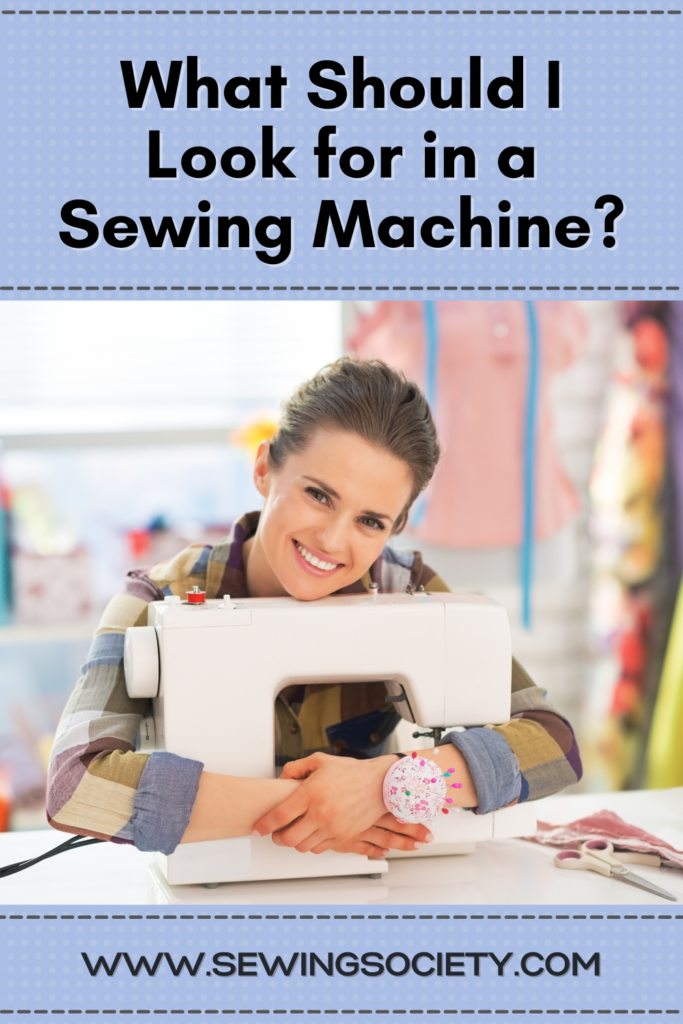



Sewing machine is updating day by day. There are various kinds of sewing machine in the market. You have to choose very carefully.